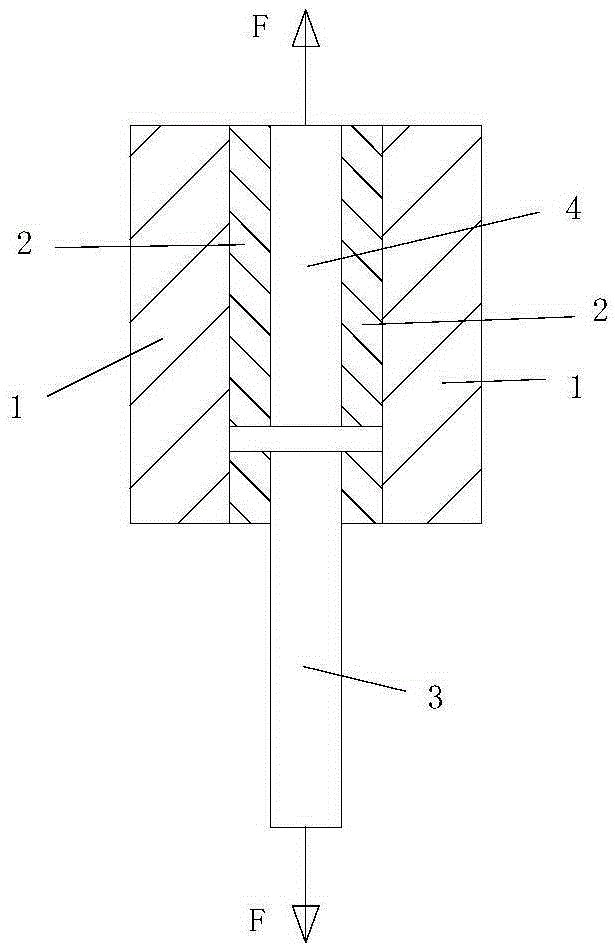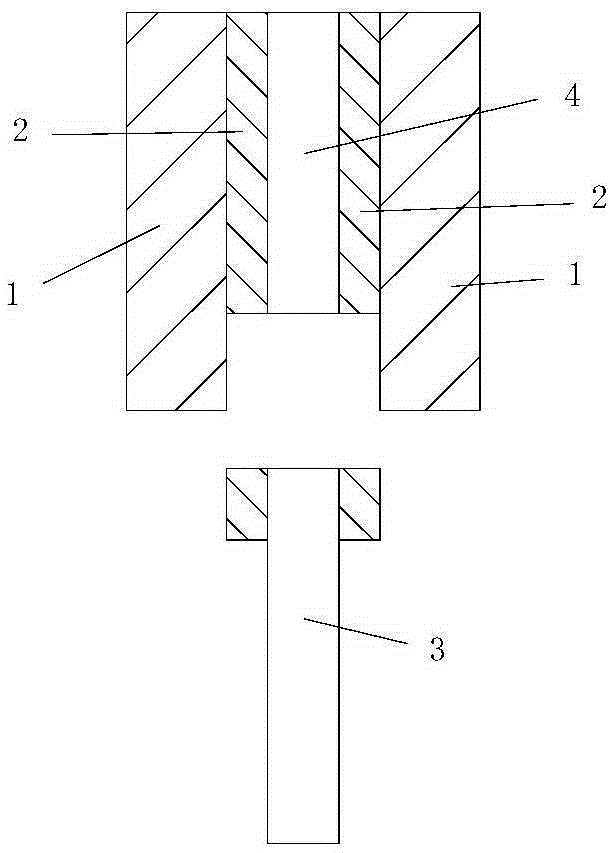Method for detecting interface bonding strength of composite materials
A technology of interface bonding strength and composite materials, applied in the direction of analysis materials, measuring devices, instruments, etc., can solve problems such as difficult comparative analysis, inaccurate results, and difficulty in satisfying experimental precise measurement and comparative research, and achieves convenient calculation and measured values. Accurate, directly readable results
- Summary
- Abstract
- Description
- Claims
- Application Information
AI Technical Summary
Problems solved by technology
Method used
Image
Examples
specific Embodiment
[0060] A method for detecting the interfacial bonding strength of brazed aluminum-steel composite materials, comprising the steps of:
[0061] 1. Prepare two pieces of ultra-thin composite layer aluminum-steel composite material, the thickness of the steel layer is 1.5mm, the thickness of the cladding aluminum layer is 0.085mm, two pieces of three-layer 4343 / 3003 / 4343 aluminum alloy composite material, the thickness is 2mm, and the thickness of the leather material is 4343 layers 0.15mm;
[0062] 2. Wash the aluminum layer of the aluminum-steel composite material and the 4343 layer of the 4343 / 3003 / 4343 aluminum alloy composite material with acid and alkali to remove oil, clean and dry;
[0063] 3. Remove the clad aluminum layer of two ultra-thin composite aluminum-steel composite materials to a certain width to form a clad aluminum layer fault belt, exposing the steel layer;
[0064] 4. The ultra-thin composite layer aluminum-steel composite material obtained in step three a...
PUM
| Property | Measurement | Unit |
|---|---|---|
| length | aaaaa | aaaaa |
| thickness | aaaaa | aaaaa |
| thickness | aaaaa | aaaaa |
Abstract
Description
Claims
Application Information
 Login to View More
Login to View More - R&D
- Intellectual Property
- Life Sciences
- Materials
- Tech Scout
- Unparalleled Data Quality
- Higher Quality Content
- 60% Fewer Hallucinations
Browse by: Latest US Patents, China's latest patents, Technical Efficacy Thesaurus, Application Domain, Technology Topic, Popular Technical Reports.
© 2025 PatSnap. All rights reserved.Legal|Privacy policy|Modern Slavery Act Transparency Statement|Sitemap|About US| Contact US: help@patsnap.com



